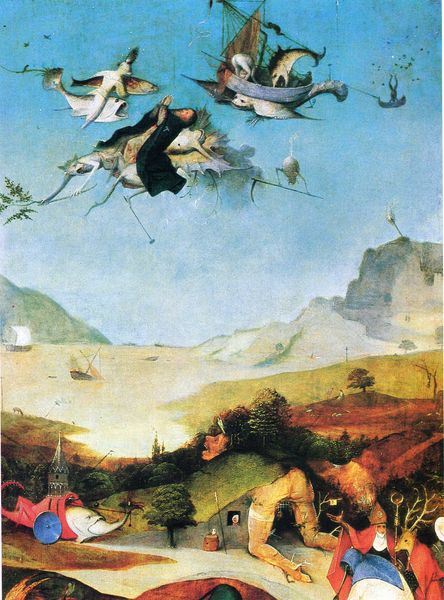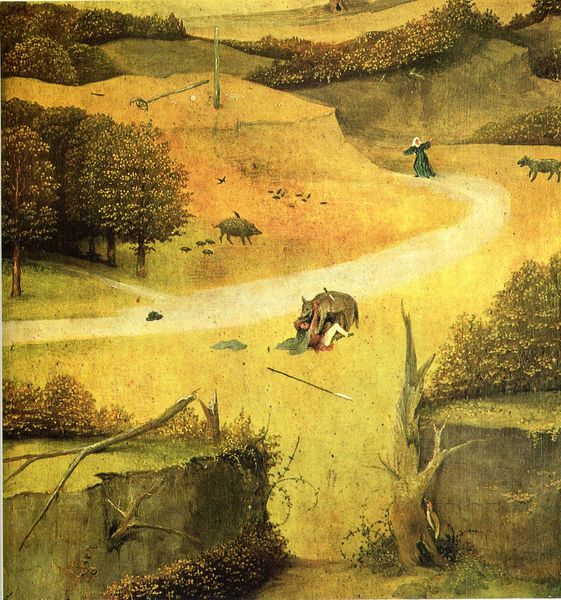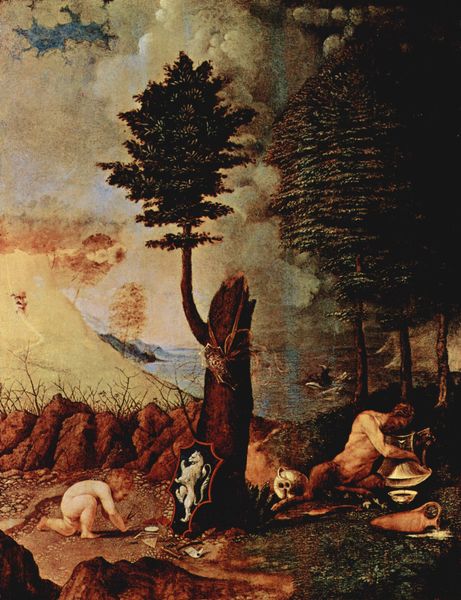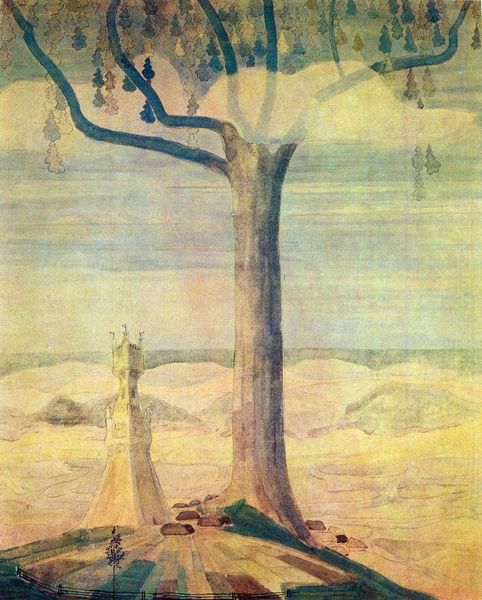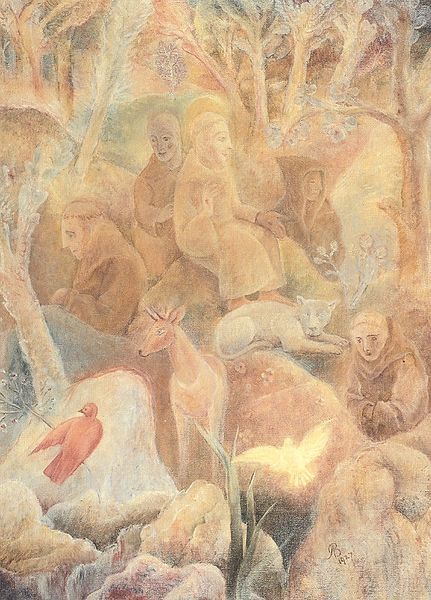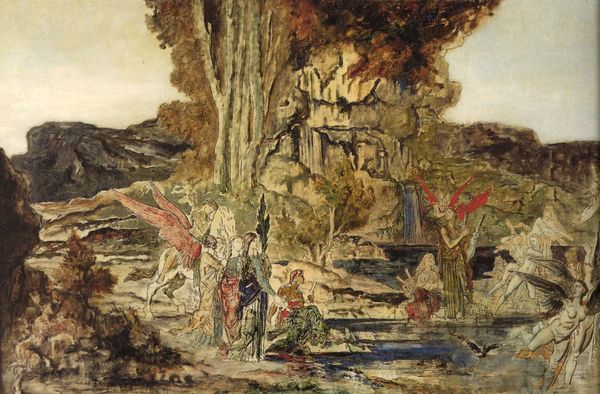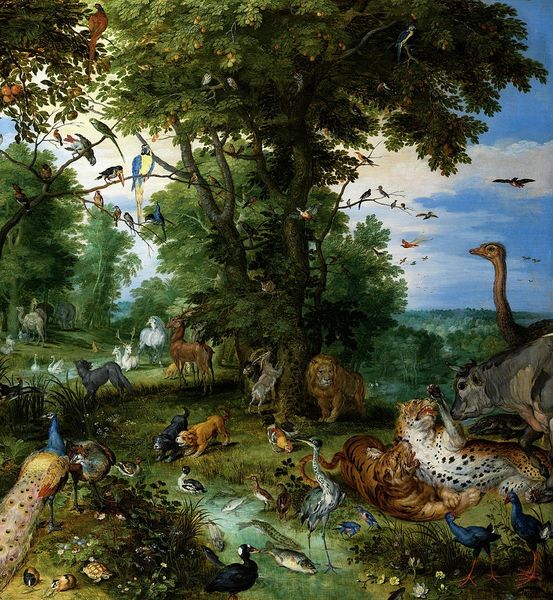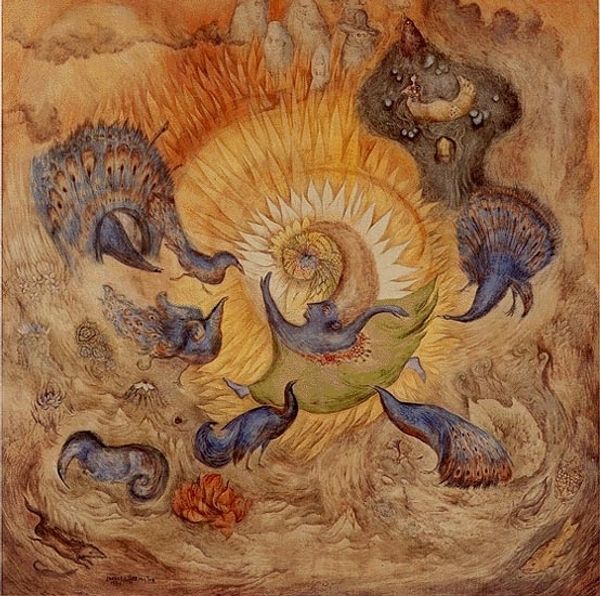
Copyright: Public domain
Curator: Today we'll be discussing a detail from Hieronymus Bosch's famed triptych, "The Garden of Earthly Delights," created around 1500 and currently housed in the Museo del Prado. Editor: Immediately, I'm struck by how bizarrely idyllic it seems, even with the odd menagerie. The colors are bright, the landscape stretches endlessly, but something feels unsettling. It’s an uncanny valley of paradise. Curator: Precisely. Note how Bosch manipulates scale and perspective. Animals appear alongside fantastical architectural structures with no regard for naturalism. The verticality of the central fountain-like structure draws the eye upward. Editor: And what are we to make of this odd collection of animals – is that a giraffe with no spots? And the elephant! It's as if Bosch is deliberately constructing a world that is both familiar and deeply estranged, commenting on our fascination and colonial impulse to catalog. Curator: Consider the influence of medieval bestiaries and the symbolic weight they carried. These creatures, real and imagined, are not simply decorative. They function as signifiers, allegories for human virtue, vice, or the inherent order of nature, or rather, the lack thereof. Editor: This painting feels intensely of its time, but it's also weirdly prescient. The distortion of nature and animal bodies feel like a potent visual metaphor for ecological concerns, an enduring warning against the commodification and corruption of the natural world. It critiques the church doctrine that sees the earth only in relation to men. Curator: An intriguing thought. Yet, structurally, these are not arbitrary choices. The artist masterfully arranges each element, guiding our gaze and revealing hidden connections between the earthly and the ethereal. The careful distribution of color creates rhythm and balance throughout the composition. Editor: It feels almost heretical to look for beauty in an artwork that might signify decay. What are our own modern delights and how might our descendants see our current “paradise”? Curator: I am left with a deeper understanding of Bosch's technique and symbolism within the frame. Editor: I appreciate now the uncomfortable, timeless resonance of this so-called delight.
Comments
No comments
Be the first to comment and join the conversation on the ultimate creative platform.

